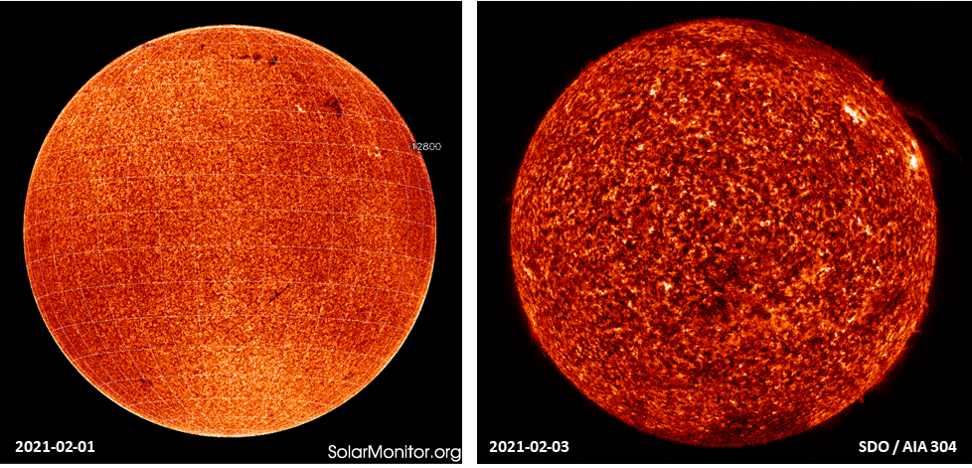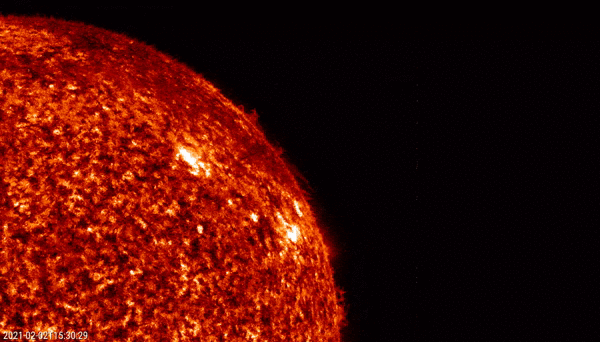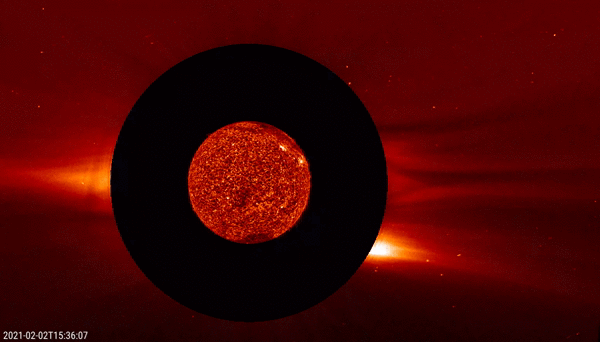Solar prominences are clouds of charged particles ("plasma") above the solar surface squeezed between magnetic regions of opposite polarity. Being cooler and denser than the plasma underneath and their surroundings, they appear as bright blobs when seen near the solar limb and as dark lines when seen on the solar disk (then they are called "filaments"). Special filters are required to observe these features, such as in the Hydrogen-alpha (H-alpha) line in the red part of the solar spectrum, or in some extreme ultraviolet (EUV) passbands.

Late on 2 February, a filament near the northwestern solar limb became unstable and visible as an eruptive prominence. The H-alpha image on 1 February clearly reveals the presence of a long but fragmented filament in the northern solar hemisphere. Two days later, the solar rotation had moved the solar filament much closer to the northwestern solar limb, where it erupted. Note also that the northen portion is involved in the process, with material raining back along the magnetic field lines onto the solar surface.

A coronal mass ejection (CME) was associated with this filament eruption, but is was very slow with a speed of only about 100 km/s. It was also not directed towards Earth.






